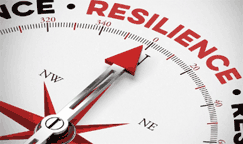Improving resilience in a highly dynamic supply chain environment remains near the top of the priority list of supply chain executives, survey after survey shows.
In fact, according to Gartner analyst Tim Payne in a recent blog post “The majority of chief supply chain officers believe that their organization’s supply chain will be subject to long-term volatility, uncertainty, complexity and ambiguity (VUCA).”
But there is a problem. According to Pane, neither CSCOs nor their supply chains are prepared. In fact, Gartner surveys have found that about two-thirds of supply chains are in a fragile state, meaning they lose value when exposed to uncertainty.”
The new imperative, Gartner says, is a journey from fragile supply chains to resilient ones and then beyond that to something Gartner calls the “antifragile” supply chain, in which they gain value amid uncertainty.
That shift, Payne says, requires supply chain planning (SCP) leaders to understand how uncertainty affects supply chain planning and decision-making, and what needs to change to achieve an antifragile state.
Gartner finds that a full 63%) of supply chains are currently in a fragile state, making them vulnerable to uncertainty. Just 8% are fully resilient, in Gartner’s estimation, characterized by the ability to maintain value when exposed to uncertainty or disruption. Only 6% of supply chains are fully in the antifragile category.
“Fragile-state planning focuses on precision, aiming to create accurate plans by synchronizing supply and demand. However, long-range planning is often disconnected from tactical planning, resulting in misalignment,” Payne says in the blog.
Some companies, recognizing mounting challenges, have sought to simply try to build more supply chain resilience. Gartner says that while resilient supply chains excel at handling small
disruptions, they can buckle under large amounts of uncertainty.
“When the latter happens, the result is reactive decision-making and limited ROI,” Payne argues.
Resilient-state planning often leverages scenario-based strategies, intentional redundancy and real-time response capabilities.
(See More Below)
|
CATEGORY SPONSOR: SOFTEON |
|
|
| |
| |
|
|
However, Payne says the precision-focused approach limits the ability to manage uncertainty effectively, and long-range and tactical planning remain misaligned. Tools such as control towers and digital twins aim to enhance visibility, but they are highly complex and costly to implement.
The Antifragile Supply Chain Paradigm
Payne says that “While only a small portion of supply chains have embraced antifragility, organizations in this state are by far the best positioned to gain value — even during periods of massive uncertainty.”
 He adds that antifragile-state planning attempts to find the right balance between probability and precision, giving leaders greater choice over how resources are distributed. He adds that antifragile-state planning attempts to find the right balance between probability and precision, giving leaders greater choice over how resources are distributed.
How to get there? Payne lists three keys:
Understand the impacts of uncertainty through experimentation, probabilistic planning and stress testing.
Align network design and sales and operations planning (S&OP) using a shared probabilistic digital model of resource performance.
Focus on resource performance and value metrics rather than plan attainment metrics, reorienting the decision-making process.
An interesting take, from SCDigest’s view.
Any comments on antifragility? Let us know your thoughts at the Feedback section below.
|